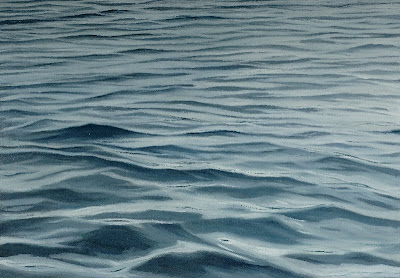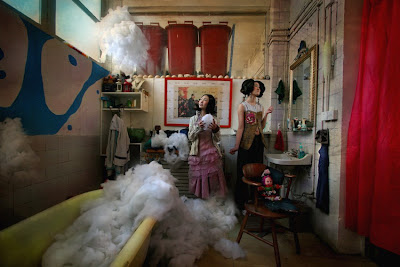A week ago today, Kanye West profiled Maleonn on West's much frequented (and influential) blog. Before a series of images he reproduces, West offers this perceptive summary of Maleonn's trajectory from leading commercial filmmmaker to rising (perhaps "risen" is the better word) global art star:
Maleonn, a Shanghai-based former advertising director decided 4 years ago to become a photographer. Maleonn was tired of trying to fit in, tired of catering to other peoples needs. Putting all practicality and financial security aside, he decided to pursue his desire in creating experimental photography, and the results speak for themselves. Portraying a very theatrical and often very abstract style, his work is highly emotional and attention catching and has gotten him recognition in many corners of the world.
West highlighted 12 Maleonn works. West's selection is impressive. (This blog profiling is not simply the results of his researchers: West is personally a major art collector, including such artists as Murakami in his collection.) Of all the images highlighted I would draw particular attention to one, for which a single print remains at the gallery. It is called "My Circus No 10 (Fire)" (below) and the available print is 40 x 60 cm in an edition of 15. (Of the 12 images, three are no longer available in either of their two editions and two are gone in at least one of the two editions; five are from very recent series and still generally available.)
 This My Circus series was exhibited at the gallery in Transfigurations, Maleonn's first solo show outside Asia and "My Circus No 10 (Fire)" was a favourite work amongst gallery clients. My Circus was also the series that CBC and the New York Times highlighted in the "City of Dreams" show within the four-part China Rises series (first airing January 2006). (Note CBC is using his transliterated real name, Ma Liang, whereas his nom d'artiste is Maleonn.)
This My Circus series was exhibited at the gallery in Transfigurations, Maleonn's first solo show outside Asia and "My Circus No 10 (Fire)" was a favourite work amongst gallery clients. My Circus was also the series that CBC and the New York Times highlighted in the "City of Dreams" show within the four-part China Rises series (first airing January 2006). (Note CBC is using his transliterated real name, Ma Liang, whereas his nom d'artiste is Maleonn.)
By the way, if you are not familiar with Kanye West, take a look at the magazine covers he has graced (including TIME, Rolling Stone, Ebony) and at his Wiki entry . West is a fascinating figure in the music world not least for his assumption of a moral leadership role such as his outspoken criticism of homophobia in some rap.
***
By the way, in the last blog posting I noted the BBC Culture Show profiling of Maleonn. The Maleonn segment can now be viewed on YouTube. It is about three minutes and really worth viewing. He offers some interesting perspectives on his work and you see shots of his studio and his preparations for his unique staged photography that is at once theatrical, filmic and painterly. Below are several shots I took on my visit with Maleonn last October in his Shanghai studio.























.jpg)












 This My Circus series was exhibited at the gallery in
This My Circus series was exhibited at the gallery in 
















